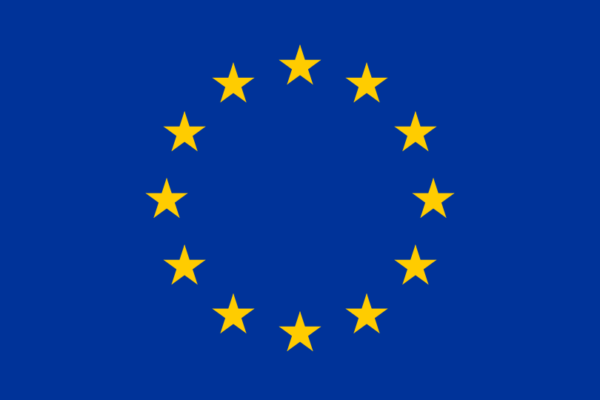Elisabeth Tietmeyer, Director of the Museum Europäischer Kulturen.
Our museum is quite young, unlike the predecessor institutions from which it emerged. It developed in 1999 from the consolidation of the Museum für Deutsche Volkskunde (Museum for German Folklore) and the European Collection of the Museum für Völkerkunde (Museum of Ethnology) in Berlin, both over 100 years old at that time. One reason for this was to remove the national self-restriction of the Folklore Museum. With around 285.000 objects we hold of one of the greatest collections of European ethnography and cultural history from the 18th century up to the present day. We are mainly concerned with everyday culture and the living environments in Europe (with the main focus on Germany for historical reasons).
One of MEK’s main objectives is to address the topic of cultural contacts in Europe. We are thereby concerned with our own society asking current questions as to forms and consequences of cultural diversity. We see one of our tasks as calling attention to this variety in our society, to create respect for people from different origins or life worlds. In doing so we attribute great importance to the inclusion of other perspectives than the ones of museum professionals, especially of people who are experts of their own culture and history, and this requires participative methods in each case.
Meanwhile the MEK has longstanding experience incorporating participatory work in the organisation of collecting, preserving, displaying and mediating practices as to accompany social and cultural processes. Thereby it focuses on the diversity of society, e.g. caused by (forced) migration – an everlasting issue of mankind since its existence and especially in Europe since the times of industrialisation, colonialism and wars. The most current migration movement is known – at least from a European perspective – as the on-going so-called refugee crisis since 2015 which seems to have reached its peak up to now (2020).
Through different collaborative formats[i] the MEK has reacted and taken a stand on migration and its consequences in everyday life (examples: With these activities the MEK has fostered social and cultural inclusion which can only be achieved when the involved citizens are enabled to get access to all museum matters so that they feel represented, respected and thus part of society at large. But do all people involved – as an overarching aim – generally shape a common cultural public memory for the future in Europe, simply based on connectivity and collaboration?
We hope to develop answers together with our academic and non-academic colleagues as experts in the heritage sector and 13 young researchers (fellows) of the POEM project. The MEK’s involvement in the project is a logical consequence of its past and present practical work, with Participatory Memory Work being the core topic, the framework of POEM. This “means the inclusion of memories across nations and social situations … into institutional memory work and heritage building and thus to acknowledge them as a significant part of the history and contemporary life in Europe … At the same time, new memory ecologies have emerged with the networked media infrastructures and its extensive uses, in mediatized, globally connected societies.”[ii] The inclusion of the latter into memory work still has potential i.e. that it is hardly used by people and groups at the margins of society.
How this could be realized with a sustainable outcome is currently being examined at the MEK by POEM fellow Susanne Boersma. Her research “Extending and internalising participatory practices: towards an incorporation of multiple cultural memories in ethnographical representations in the museum” aims to study the influence and outcomes of museums’ projects that engage people who have been forced to leave their home countries. Based on 4 case studies, the project asks in what ways participatory curatorial practice and the theme of migration have been and could become institutionally embedded in the development of new exhibitions and additions to collections in ethnographic resp. cultural historical museums. This should lead to an understanding of how today’s socially inclusive memory work affects museums as well as those involved in participatory projects on the one hand, whilst on the other hand exploring the wider impact of such museum projects on integration and general perception of forced migrants.
In addition to this research at the MEK, some of the fellows have been spending one or several months at the museum to better understand the organisation and politics of a cultural institution, and to explore current participatory work and novel approaches for engagement with objects from the museum’s collection. The POEM project and the Museum Europäischer Kulturen have been, it seems, benefitting from a symbiotic relationship; hopefully, with insightful outcomes and practical solutions at the end of the project in 2021.
[i] Exhibitions like “Generation Adefra. 20 Years of the Black Women’s Movement in Germany” (2006), see: https://www.smb.museum/en/museums-institutions/museum-europaeischer-kulturen/exhibitions/detail/generation-adefra-20-years-of-the-black-womens-movement-in-germany.html (accessed on 7/3/2020); “Brave New World – Romanian Migrants’ Dream Houses” (2015/16), see: https://www.smb.museum/en/museums-institutions/museum-europaeischer-kulturen/exhibitions/detail/schoene-neue-welt-traumhaeuser-rumaenischer-migranten.html (accessed on 7/3/2020); “daHEIM: Glances into Fugitive Lives” (2016/17), see: https://www.smb.museum/en/museums-institutions/museum-europaeischer-kulturen/exhibitions/detail/daheim-einsichten-in-fluechtige-leben.html; virtual version, see: https://artsandculture.google.com/exhibit/daheim-–-glances-into-fugitive-lives/_wKCbLGQzCazKA?hl=en) (accessed on 7/3/2020).
[ii] Quote of POEM project outline, see: https://www.poem-horizon.eu/project-outline/ (accessed on 7/3/2020).

